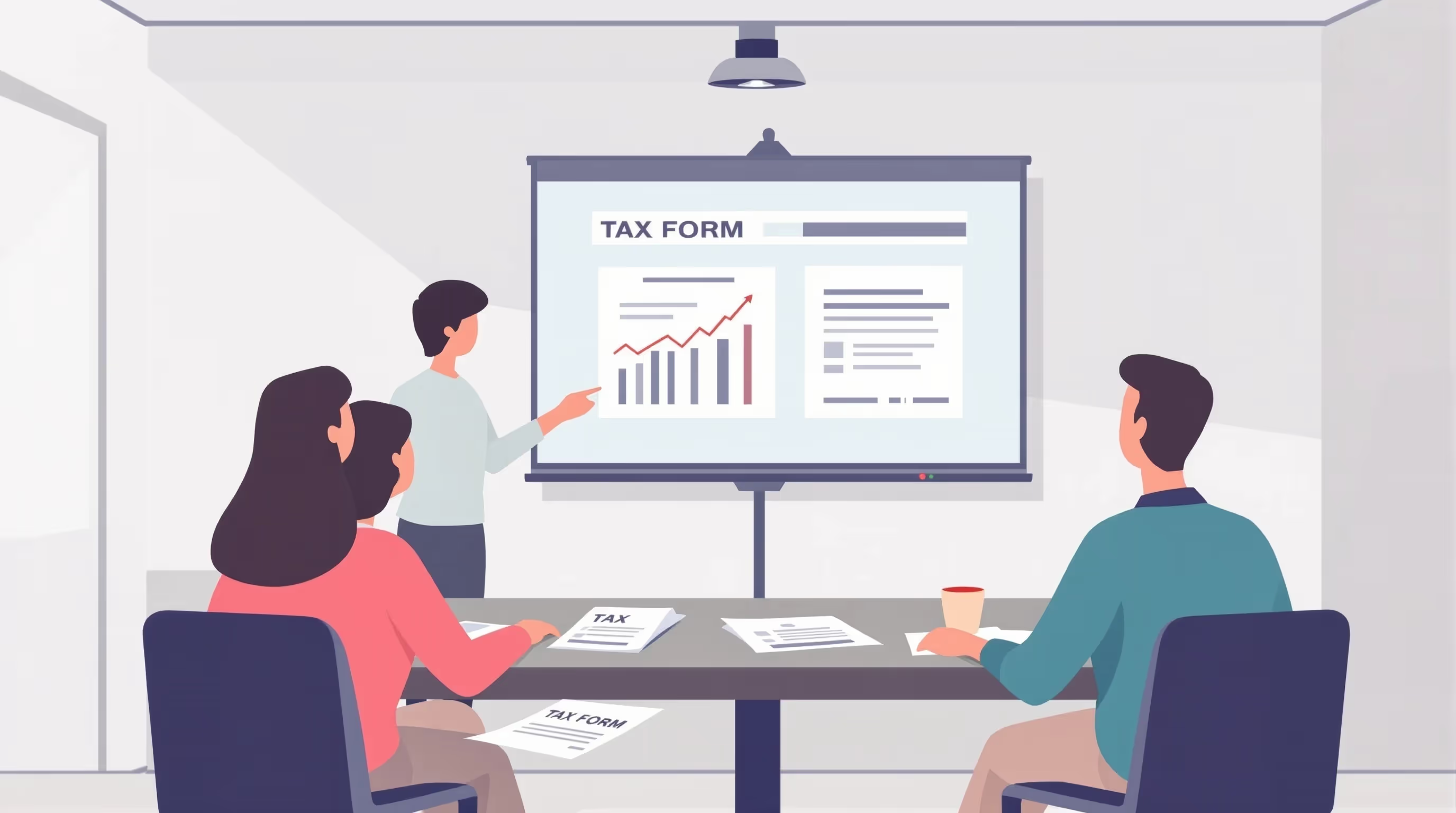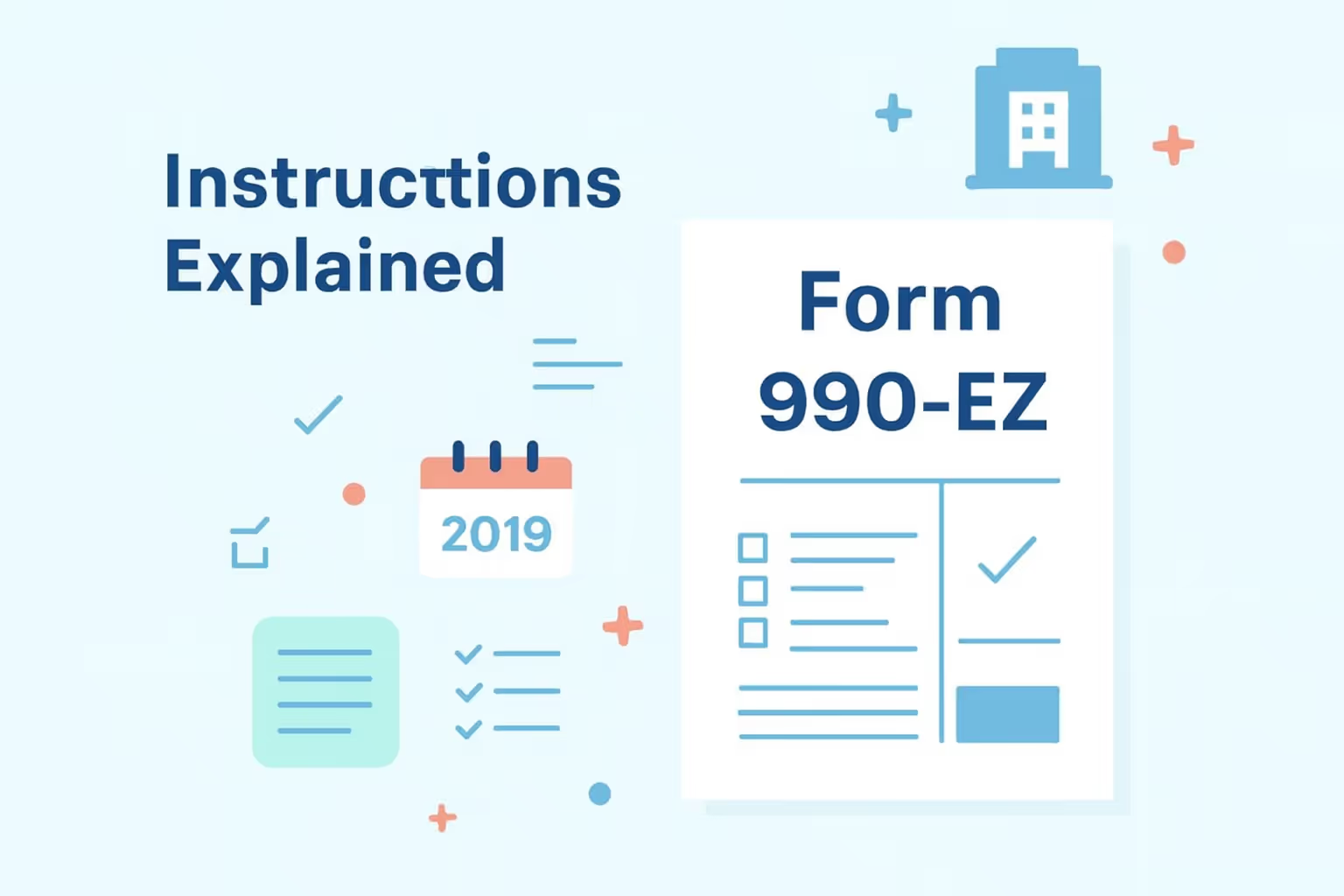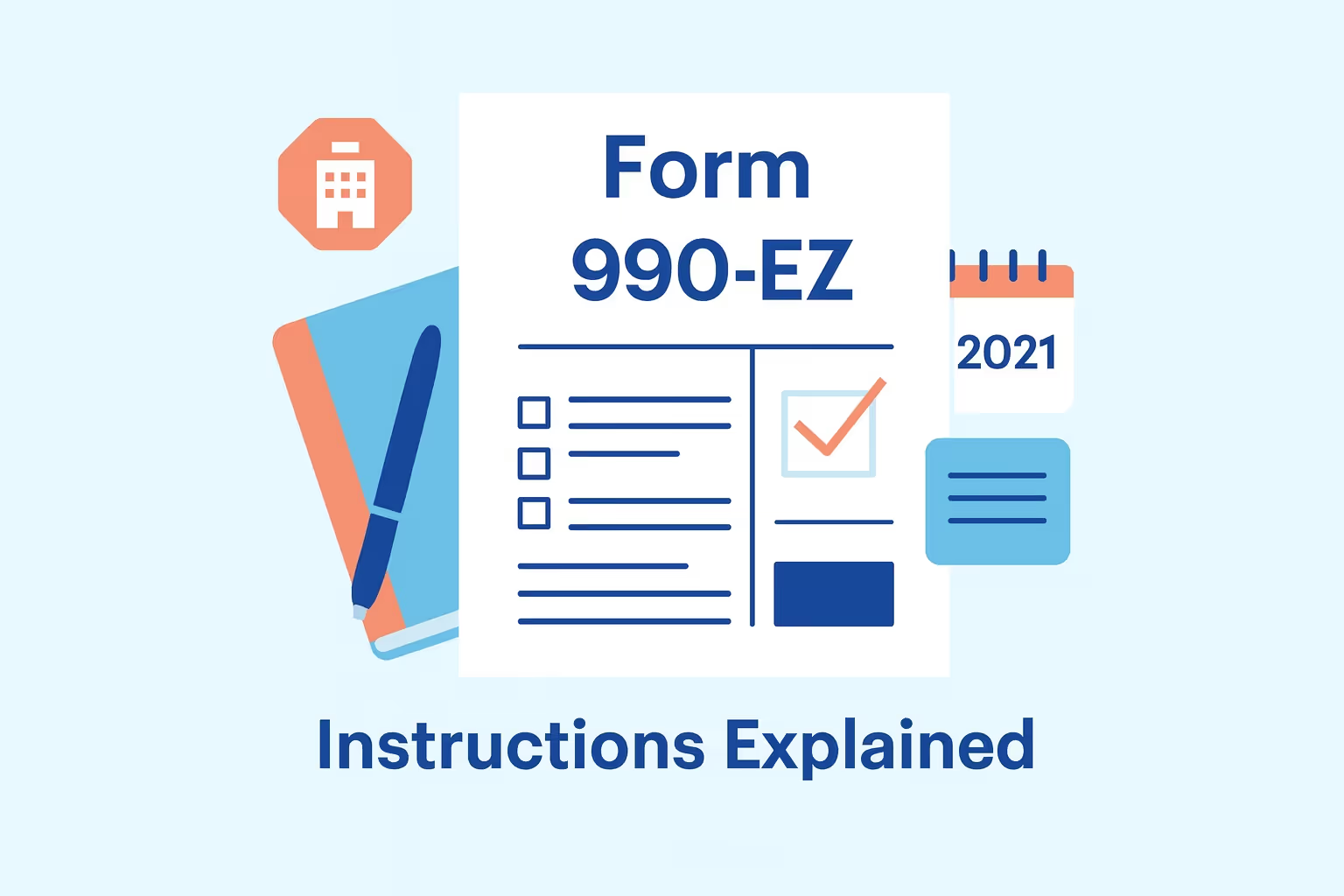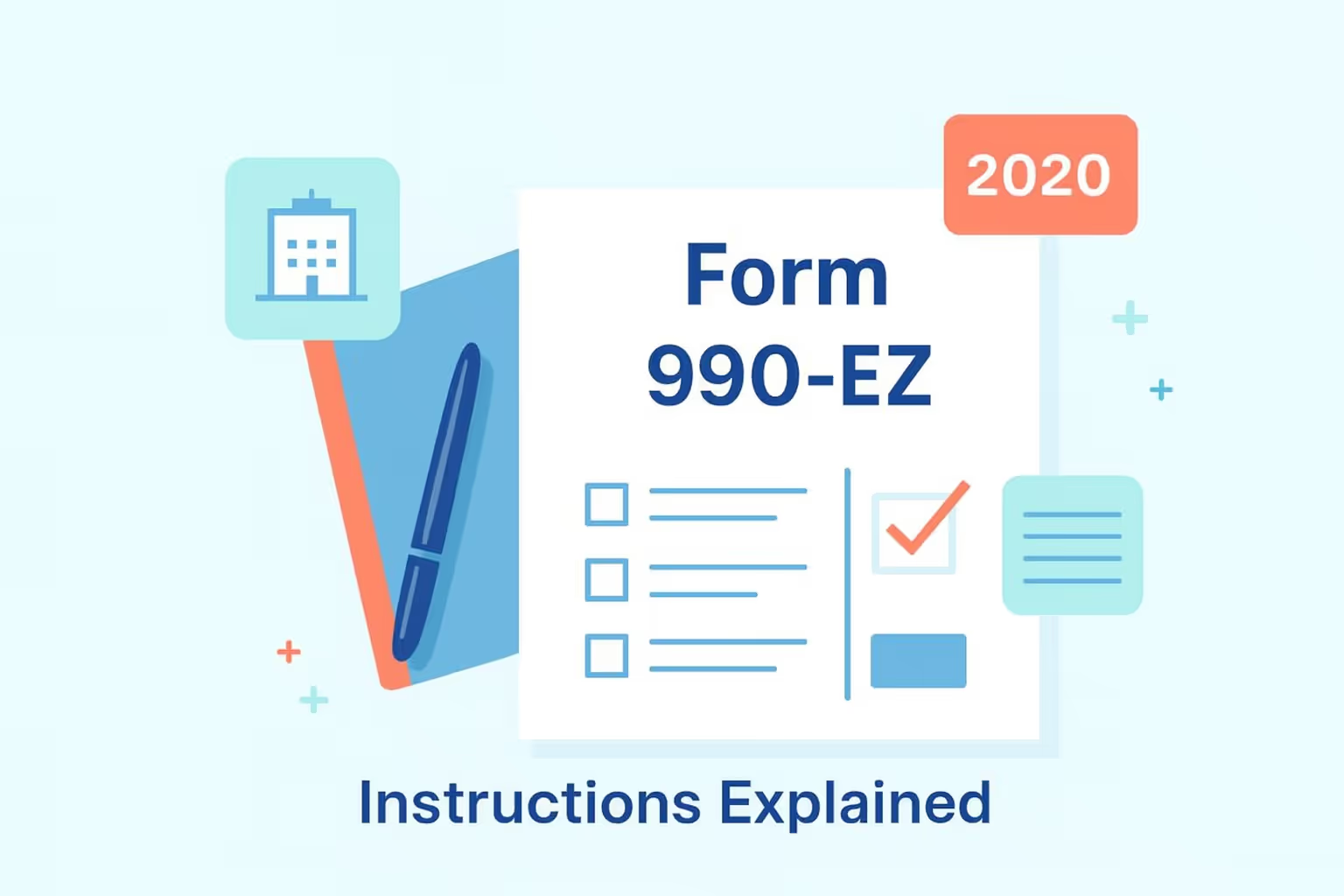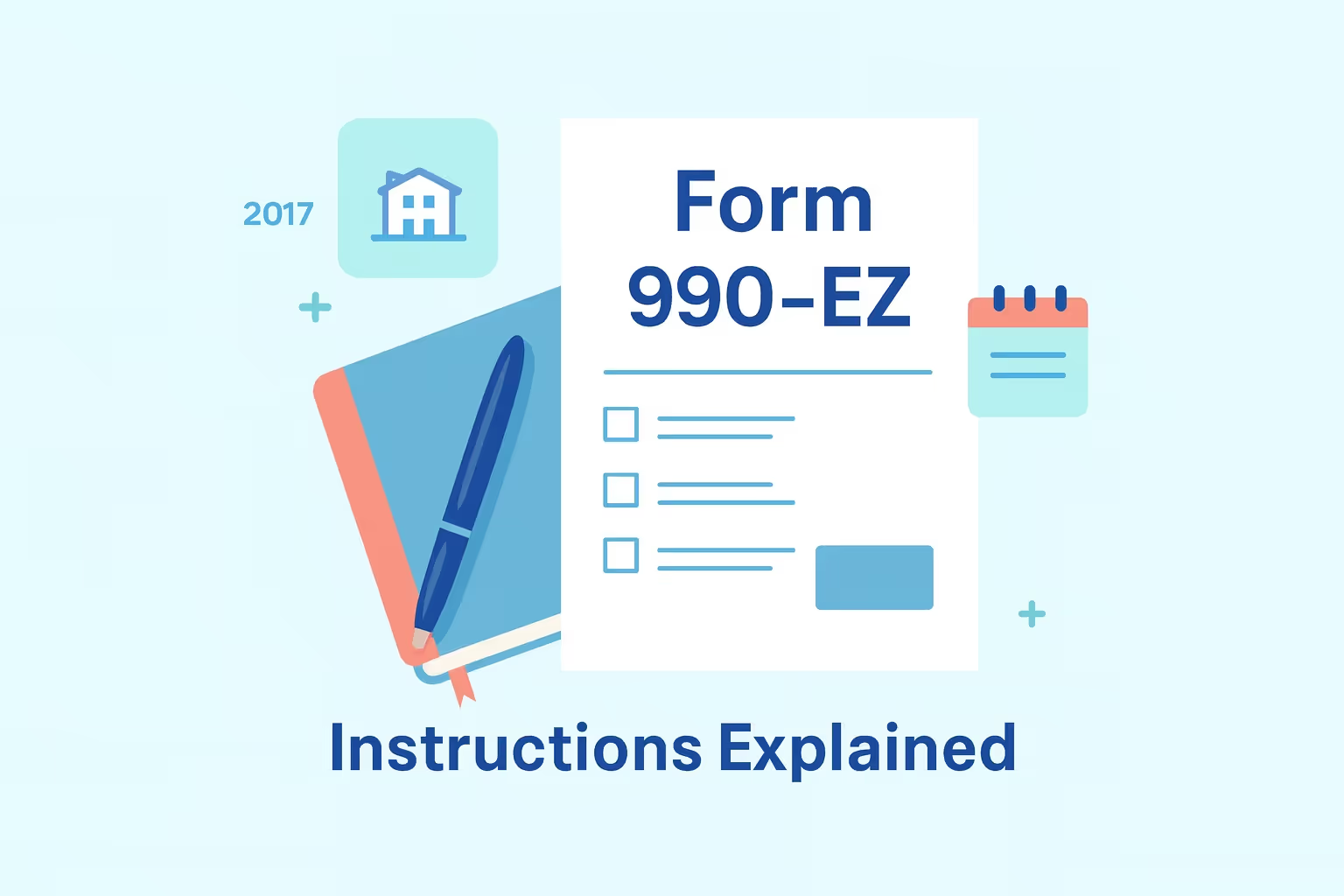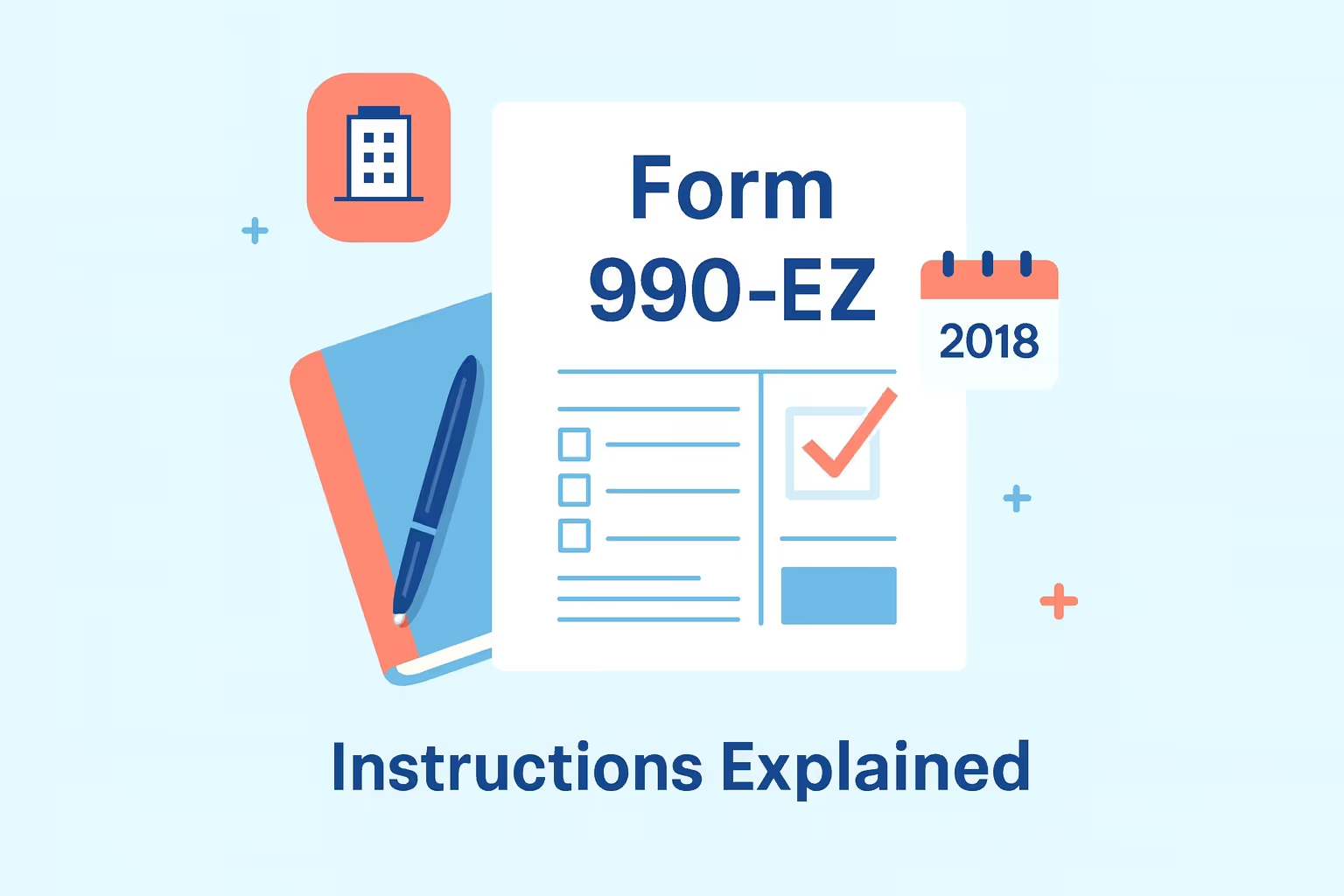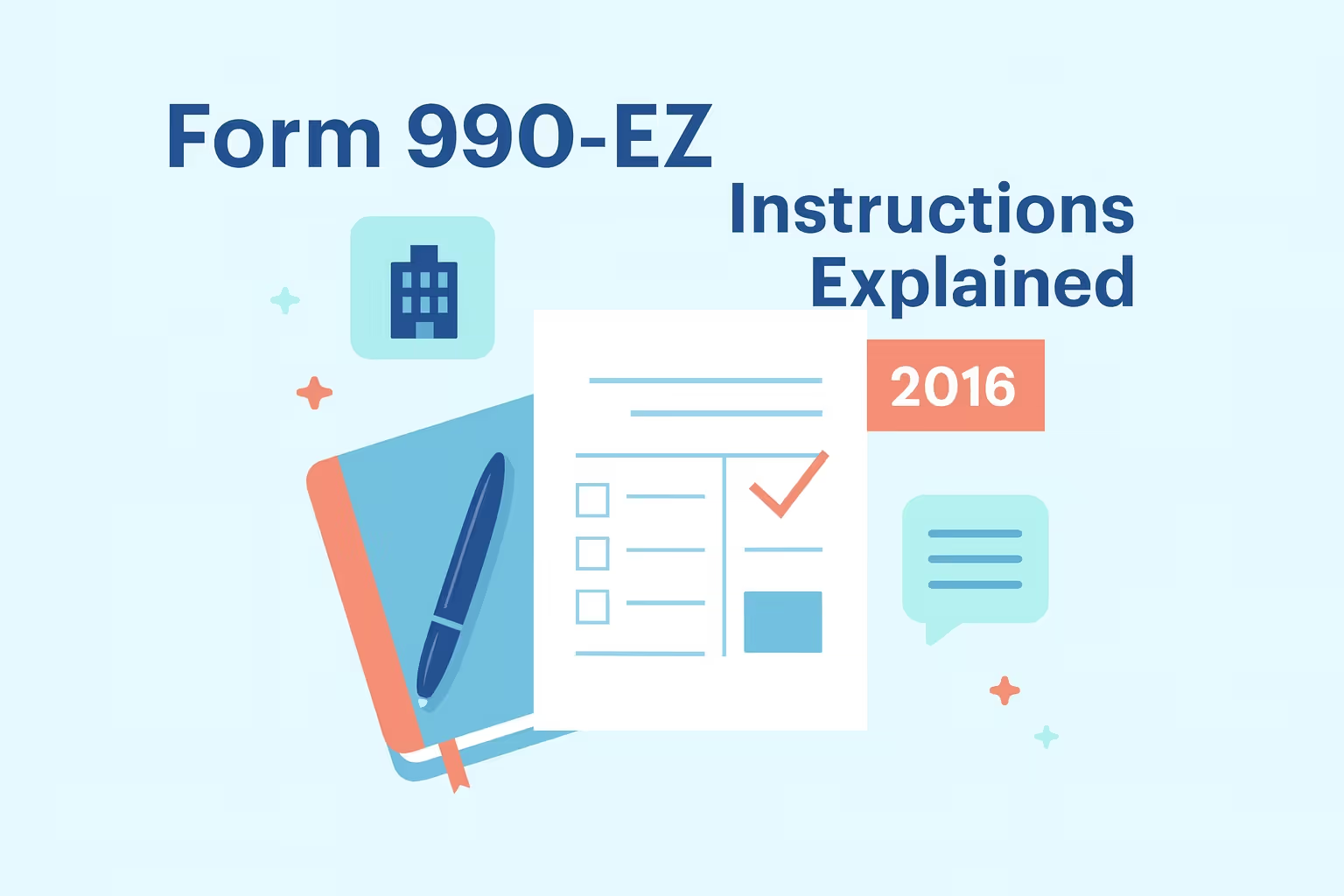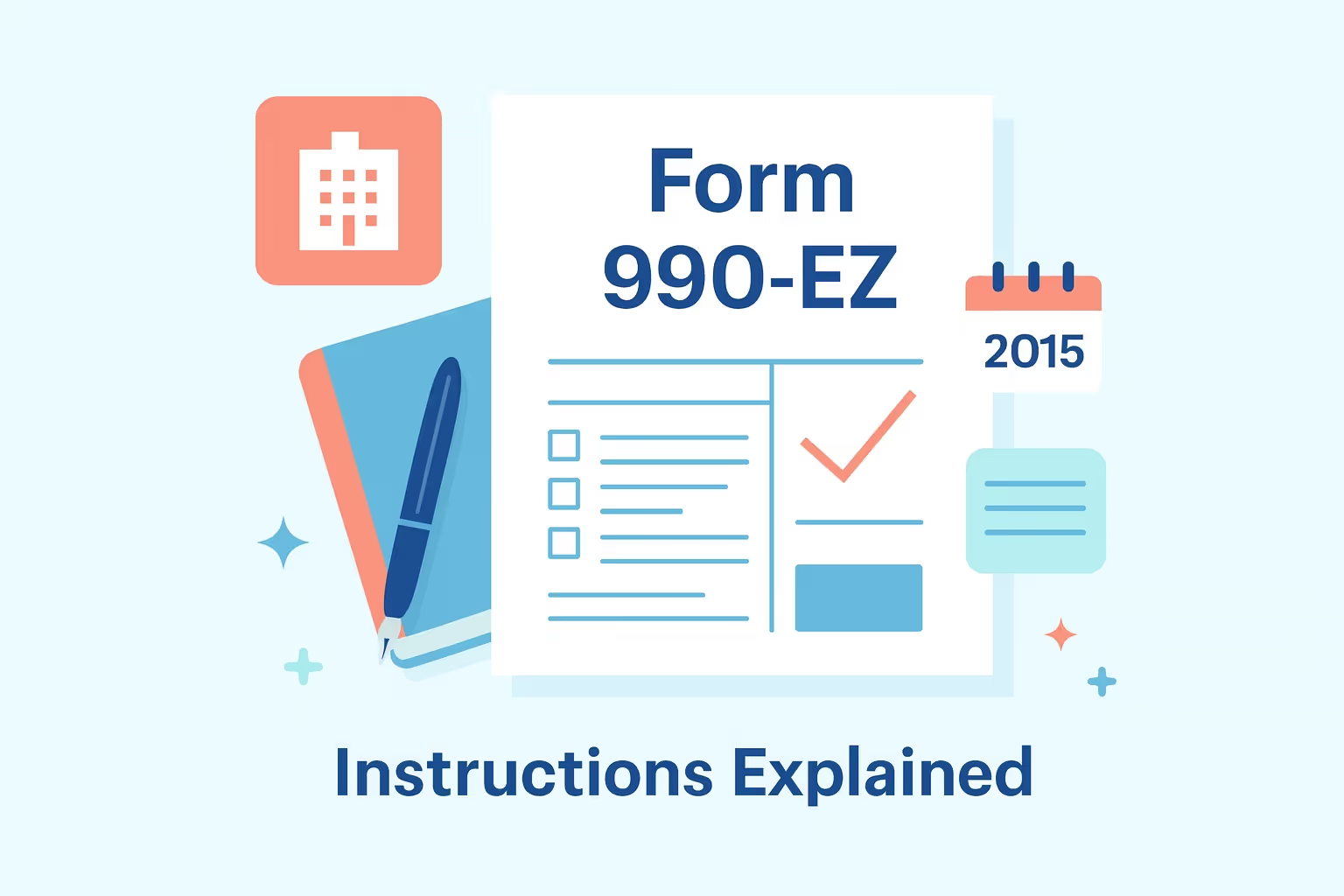
What IRS Form 990-EZ 2025 Is For
IRS Form 990-EZ serves as the annual return for tax-exempt organizations that do not meet the thresholds for the full Form 990. The form helps nonprofits and charities maintain tax-exempt status by reporting gross receipts, expenses, donors, and board information for the tax year. Organizations must file the required form by the correct date to avoid penalty concerns that may lead to a loss of compliance after three consecutive years of nonfiling.
When You’d Use Form 990-EZ for 2025
Nonprofits use Form 990-EZ when their gross receipts fall between IRS limits for the 2025 tax year and their assets remain below the full Form 990 threshold. Organizations file Form 990-EZ when correcting a prior return, when submitting a late annual return, or when updating schedules that include legal statements or address changes. Groups that fall below the filing requirement may use the e-postcard option instead of this form.
Key Rules or Details for 2025
- Electronic filing requirement: Organizations file Form 990-EZ through an IRS-approved system that creates an accurate submission and supports timely compliance with federal income tax reporting rules.
- Eligibility thresholds: Nonprofits qualify for Form 990-EZ when their gross receipts remain between set limits and their total assets stay below the full Form 990 cutoffs for the applicable year.
- Small filer option: Tax-exempt organizations that normally receive less than the minimum amount in gross receipts may file Form 990-N, the e-postcard, as their required annual return.
- Late filing penalties: IRS rules establish a penalty structure that charges a daily amount for organizations that miss the correct filing date and do not request an extension of time.
- Consequence of repeated failure: Three consecutive years of missing the required form result in automatic revocation of tax-exempt status for most exempt organizations.
- Amended filing rules: Groups file an amended return when information changes and must include schedules and a complete explanation to assist the IRS in reviewing the result.
Browse more tax form instructions and filing guides in our Forms Hub.
Step-by-Step High-Level
Step 1: Gather your records
Organizations start by collecting accurate records that include statements, fund activity, donor sources, and account details for the applicable tax year. This step helps the group prepare a complete return, confirm employment tax information when needed, and review resources that support the final submission. Nonprofits should also find prior forms and any IRS notes or letters that may address past issues.
Step 2: Use the correct form year
Nonprofits must prepare the required form that matches the 2025 tax year and should review the IRS link for updated instructions. This step prevents errors that close the review process and delay acceptance. Groups filing an amended return should include an explanation in the appropriate schedules, allowing the IRS to understand the decision and view the corrected information clearly.
Step 3: Attach required schedules
Organizations include schedules when reporting donors, program sources, board members, and additional expenses that affect the annual return. These schedules provide the information that the IRS requires to review the organization's activities and ensure compliance with the rules governing tax-exempt status. Nonprofits should review instructions for each type of activity to prepare accurate attachments that explain the filing.
Step 4: File electronically
Groups file Form 990-EZ electronically through the IRS-approved system, which creates a complete submission and helps the organization remain in good standing. State registration rules may require matching filings or copies, so organizations review their state requirements before finalizing the return. Using the correct software helps organizations meet federal form and accuracy standards.
Step 5: Keep documentation
Organizations keep records, statements, schedules, and related sources for at least three years to support any IRS review that may occur after filing. Accurate records enable groups to review their financial activity for the upcoming year and prepare future forms accurately. These documents also assist board members when evaluating fund usage and making decisions that affect compliance.
Learn more about federal tax filing through our IRS Form Help Center.
Common Mistakes and How to Avoid Them
- Submitting an unsigned return: Organizations can avoid this mistake by confirming that an authorized individual signs the annual return before filing and carefully reviewing the signature page.
- Using incorrect gross receipts amounts: Groups prevent errors by comparing records, donor statements, and fund sources to ensure the return includes all revenue for the tax year.
- Filing the wrong form type: Nonprofits avoid filing issues by confirming whether they must file Form 990, Form 990-EZ, or Form 990-N e-postcard based on IRS thresholds.
- Missing schedules: Organizations reduce delays by reviewing required schedules before submitting the return and attaching complete statements that explain financial activity.
- Weak late filing explanations: Groups can improve their results by providing a clear reason for late filing and supporting their request with accurate records that demonstrate reasonable cause.
- Incorrect address or board information: Organizations avoid complications by reviewing director information, address changes, and registration details before completing the required form.
Learn more about how to avoid business tax problems in our guide on How to File and Avoid Penalties.
What Happens After You File
When schedules or statements require clarification, the IRS processes Form 990-EZ submissions and may send information requests to clarify the information. Organizations view their account online to find updates, verify acceptance, and confirm that all taxes and penalties are resolved. Additionally, nonprofits may request assistance when state requirements apply, and they should review the results to ensure compliance for the upcoming year.
FAQs
Can nonprofits file Form 990-EZ late without losing tax-exempt status under IRS Form 990-EZ 2025 rules?
Nonprofits may file late, but the IRS revokes tax-exempt status when an organization fails to file an annual return for three consecutive years without correction.
How does the IRS calculate penalty amounts for a late annual return under Form 990-EZ requirements?
The IRS calculates penalties using a daily charge that continues until the organization files a complete return, with higher amounts applied to larger nonprofits.
Can organizations file Form 990-N instead of Form 990 when they review income tax thresholds for exempt organizations?
Organizations may file Form 990-N when their gross receipts typically fall below the IRS limit, but they must review yearly totals to confirm eligibility.
Do exempt organizations need to prepare schedules when they file an amended return for Form 990-EZ?
Exempt organizations must include updated schedules with amended returns, ensuring the IRS can review corrected information and understand how the revised statements affect compliance.
How does the IRS view failure to file Form 990-EZ for three consecutive years when evaluating tax-exempt status?
The IRS views repeated failure to file as significant noncompliance and automatically revokes tax-exempt status after three consecutive years of missing the required annual return.
Can nonprofits update board member information or address details when they file Form 990-EZ for the applicable year?
Nonprofits may update board and address information on Form 990-EZ, ensuring the IRS receives accurate records that support proper registration and future communication.
For more resources on filing or understanding prior-year IRS forms, visit our guide on Nonprofit & Exempt Organization Forms.










